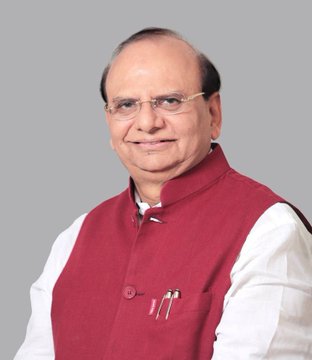Delhi LG Reveals 3-Year Plan to Clean Yamuna River Amid Political Transition
Delhi LG Announces Major Update on Yamuna River Cleaning Initiative
Delhi’s Lieutenant Governor (LG), Vinai Kumar Saxena, provided a significant update on the long-awaited project to clean the Yamuna River, a key issue that was frequently mentioned during the recently concluded Delhi Assembly elections. The update, which follows election promises made by the Bharatiya Janata Party (BJP), signals a major step forward in addressing one of the capital’s most pressing environmental concerns.
A Long-Awaited Project Begins
On Friday, Delhi LG Vinai Kumar Saxena revealed that the process of cleaning the Yamuna River has officially commenced. In his briefing, he mentioned that the cleaning operations, which include the use of trash skimmers, weed harvesters, and dredge utility crafts, began today. Saxena emphasized the urgency of the situation, noting that the project was a high priority for the new administration.
The announcement comes as the national capital is awaiting the swearing-in of its new Chief Minister, following a historic political shift. The BJP won 48 out of the 70 seats in the Delhi Assembly elections, marking a significant victory over the Aam Aadmi Party (AAP), which had governed the city for the past decade.
The Four-Pronged Strategy for Cleaning the Yamuna
The plan to clean the Yamuna is a comprehensive one, with a four-pronged approach that aims to tackle the river’s pollution on multiple fronts. Saxena explained the strategy in detail, outlining key areas that would be targeted in the coming months and years:
- Trash, Garbage, and Silt Removal: The first step of the plan involves the removal of accumulated waste, including trash, garbage, and silt, from the river. This step will help address the most visible form of pollution in the waterbody.
- Drain Cleaning Operations: At the same time, the cleaning of major drains like the Najafgarh Drain and the Supplementary Drain will begin. This is crucial, as untreated sewage and waste from these drains often flow directly into the Yamuna.
- Monitoring Sewage Treatment Plants (STPs): Saxena stressed the importance of ensuring the existing sewage treatment plants (STPs) are functioning at full capacity. A continuous watch on their performance will be maintained to ensure that they are effectively treating wastewater before it enters the river.
- Construction of New STPs: A major part of the initiative will involve constructing additional STPs and decentralized sewage treatment plants (DSTPs) to meet the shortfall in treating about 400 million gallons per day (MGD) of sewage. Saxena pointed out that this is necessary to stop untreated sewage from contaminating the river.
Timeline and Coordination Across Agencies
Saxena laid out an ambitious timeline for the cleanup, aiming to complete the project within three years. He highlighted that the success of the plan would require the seamless coordination of multiple government agencies. These include the Delhi Jal Board (DJB), Irrigation and Flood Control Department (I&FC), Municipal Corporation of Delhi (MCD), Public Works Department (PWD), Delhi Development Authority (DDA), and the Environment Department.
In addition, Saxena emphasized that weekly monitoring of progress would be conducted at the highest level to ensure that the plan stays on track. To keep industrial effluent from polluting the river, the Delhi Pollution Control Committee (DPCC) has been tasked with closely monitoring the discharge of untreated sewage by industries.
Political Context and Promises Made During Campaign
The issue of cleaning the Yamuna River was a cornerstone of the BJP’s election campaign. The party frequently criticized the AAP-led government for not fulfilling its promises to clean the river, pointing to the deteriorating condition of the Yamuna as a sign of failure. During his rallies, Arvind Kejriwal, the former Chief Minister of Delhi, admitted that his government had not succeeded in fulfilling the promise due to challenges like the Covid-19 pandemic and a major excise policy case involving senior AAP leaders.
The BJP’s election victory came after over 26 years of attempts to break the AAP’s stronghold on Delhi, and now, with the new administration, Saxena’s announcement reflects a renewed focus on environmental issues. The election’s aftermath, with a shift in political leadership, has added further urgency to the implementation of these promises.
A Step Toward a Cleaner Delhi
The cleaning of the Yamuna River is more than just an environmental issue—it is a critical part of ensuring the health and well-being of millions of Delhi residents. Pollution in the river has long been a concern, with untreated sewage and industrial effluent damaging both the ecosystem and public health. If the new government’s ambitious plan succeeds, it could set a precedent for large-scale environmental projects across India.
The task ahead is immense, but with a detailed strategy, clear deadlines, and inter-agency cooperation, the project’s success could herald a cleaner and more sustainable future for Delhi.

